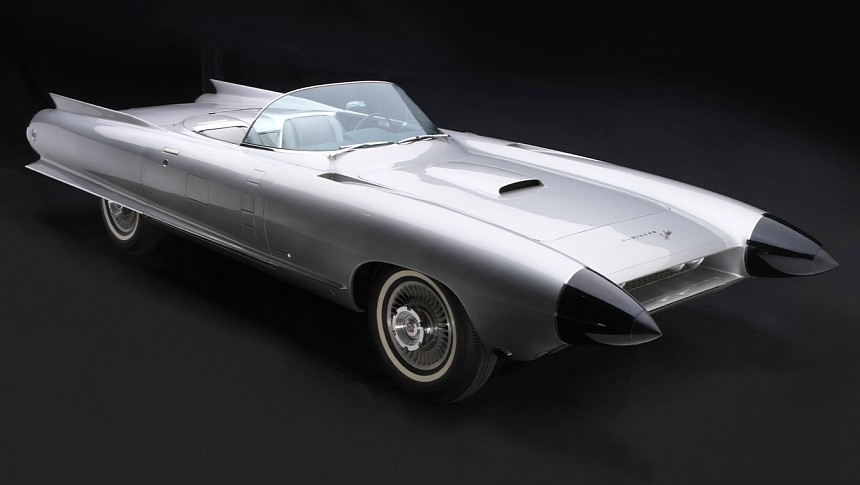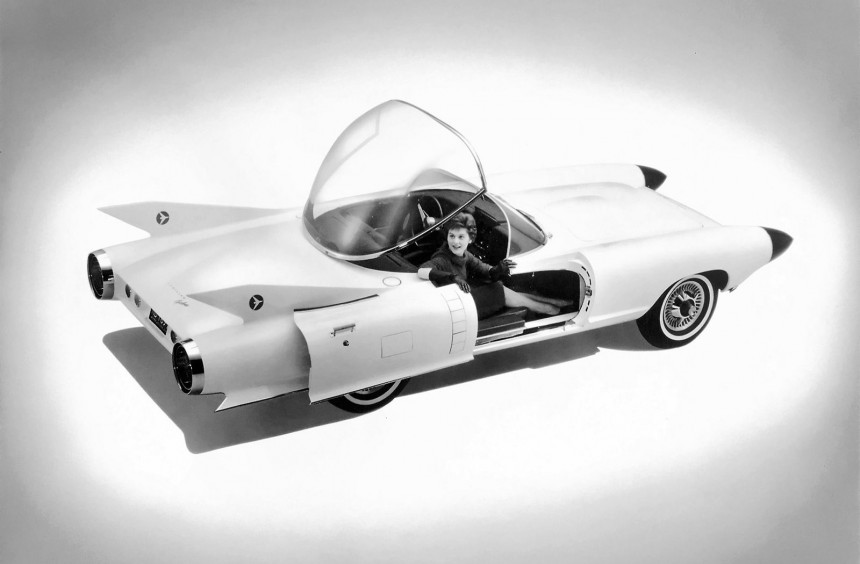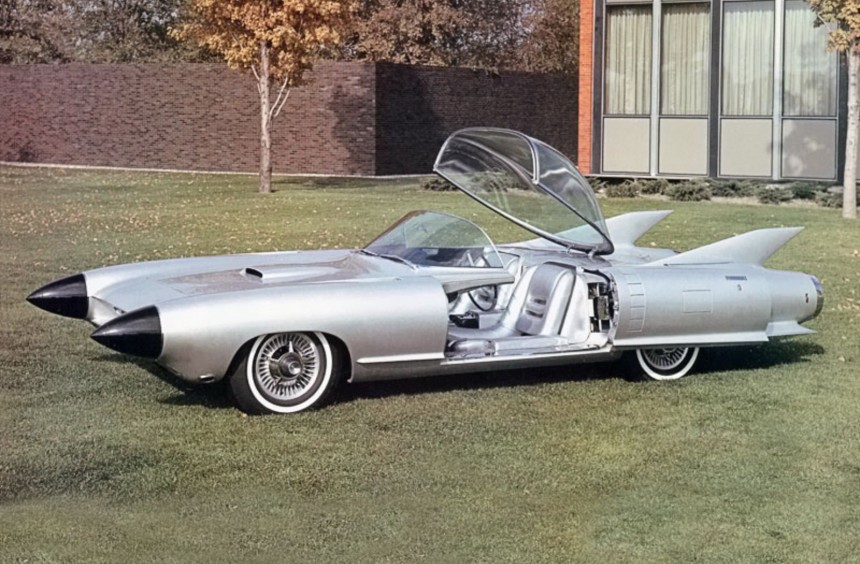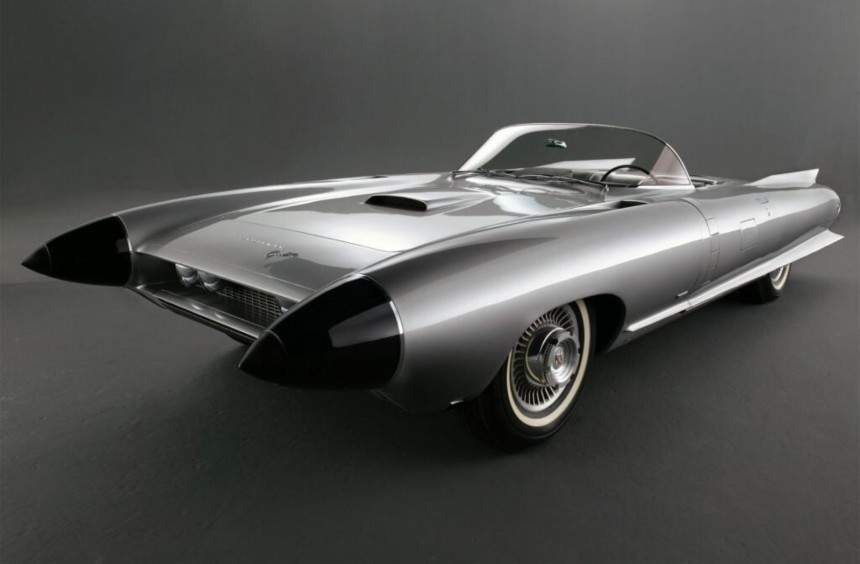Dubbed a laboratory on wheels, Harley J. Earl's last masterpiece looked like a rocket on wheels and showcased many awesome features that are still high-tech more than six decades later.
The 1950s is remembered as a period of rebirth when most of the world breathed a sigh of relief, living a somewhat peaceful and prosperous life. The world was recovering from the Great Depression of the 1930s and the global war years of the 1940s.
It was a decade of technical innovation marked by the start of space exploration, which occurred in 1957 when the Soviet Union launched Earth's first artificial satellite, Sputnik 1.
In the automotive industry, the 1950s was a decade marked by futuristic designs that drastically improved how cars looked. Most manufacturers were abandoning the old boxy style that made more cars look more or less the same during the past two decades, and daring new styles were emerging.
In the US, departments dedicated solely to developing new styles were born. Thanks to the efforts of visionary designers who wanted to showcase their ideas in more than sketch form, the industry witnessed a concept car boom.
One of the most fascinating concept cars of the 1950s was the Cadillac Cyclone XP-74, which pushed the boundaries of design and technical innovation.
It was the brainchild of the most influential designer of the decade: the legendary Harley Jarvis Earl. Born in Holywood, California, in 1893, Earl became renowned for his designs during the early-1920s while running a coachbuilding company established by his father but owned by Cadillac dealer Don Lee.
In 1927, Lee persuaded Earl to submit a design proposal for the upcoming LaSalle. His work impressed General Motors president Alfred P. Sloan who decided to create the "Art and Color Section" (GM's first design department) and named Earl its first director.
During the following decades, Harley J. Earl pioneered many innovative designs, making full-size clay models an industry standard. He also created some of the first concept cars in the US, such as the famous Buick Y-Job, and was responsible for kickstarting the Project Opel, which eventually became the Chevrolet Corvette.
The most cutting-edge concepts that Earl designed for GM's Cadillac brand were labeled Dream Cars, and the last one on his resume was the beautiful Cyclone.
Although he was nearing retirement, Earl didn't cease to amaze with bold new designs. During the second part of the 1950s, he began employing styling cues from the aerospace industry, and the best example was the Cyclone.
Introduced in 1959, the concept looked like a futuristic convertible with a rocket embedded on each side. It featured prominent tailfins toward the back adorned with General Motors Air Transport Section (GMATS) logos and a retractable, fully-transparent canopy instead of a conventional roof.
Apart from its flamboyant looks that combined Cadillac's distinctive focus on luxury with an abundance of Space Age cues, the Cyclone - like most of Harley J. Earl's Dream Cars - also showcased a multitude of high-tech features.
Unquestionably the Cyclone's most eye-catching feature was the pop-up bubble canopy. Coated with vaporized silver on the inside to protect the occupants from harmful UV rays and reduce glare, it was electro-hydraulically retractable, "disappearing" behind the rear seats by flipping a switch. Moreover, the plexiglass top was connected to a sensor that automatically raised it when detecting rain.
Since there were no side windows, a sound system with speakers mounted into the fender tops was used for things like ordering at a drive-in. Additionally, the doors featured small retractable openings to allow occupants to receive their orders when the top was down.
Speaking of which, the doors were another high-tech feature of the Cyclone. They didn't open conventionally, but, with the touch of a button, they slid toward the rear with the help of electric motors.
Another impressive feature of the Cyclone was hidden inside those black, warhead-like cones that dominated the car's front end. Both included sensors that gauged speed and detected oncoming traffic or pedestrians, sending visual and audible alerts to the driver. It was one of the first collision avoidance systems ever, a saftety feature that became commonplace in passenger cars more than 50 years later.
Though some fascinating American concepts were eventually scrapped, the impressive Cyclone has survived.
Built around a custom 104-inch (264 cm) wheelbase chassis and tipping the scales at 4,630 lbs (2,100 kg), the Cyclone is an imposing presence that can be admired at the GM Heritage Center in Sterling Heights, Michigan.
Although its rear tailfins were replaced with smaller versions in 1964, the iconic concept retains all its original features. These include the powertrain comprised of a 389-ci (6.4-liter), 350-hp V8, and a three-speed manual transaxle.
Sixty-four years after it was unveiled for the first time, the Harley J. Earl's Cadillac Cyclone remains a stunning example of Space Age design and one of the most fascinating concept cars of its era.
It was a decade of technical innovation marked by the start of space exploration, which occurred in 1957 when the Soviet Union launched Earth's first artificial satellite, Sputnik 1.
In the automotive industry, the 1950s was a decade marked by futuristic designs that drastically improved how cars looked. Most manufacturers were abandoning the old boxy style that made more cars look more or less the same during the past two decades, and daring new styles were emerging.
In the US, departments dedicated solely to developing new styles were born. Thanks to the efforts of visionary designers who wanted to showcase their ideas in more than sketch form, the industry witnessed a concept car boom.
Harley J. Earl's last "dream car"
It was the brainchild of the most influential designer of the decade: the legendary Harley Jarvis Earl. Born in Holywood, California, in 1893, Earl became renowned for his designs during the early-1920s while running a coachbuilding company established by his father but owned by Cadillac dealer Don Lee.
In 1927, Lee persuaded Earl to submit a design proposal for the upcoming LaSalle. His work impressed General Motors president Alfred P. Sloan who decided to create the "Art and Color Section" (GM's first design department) and named Earl its first director.
During the following decades, Harley J. Earl pioneered many innovative designs, making full-size clay models an industry standard. He also created some of the first concept cars in the US, such as the famous Buick Y-Job, and was responsible for kickstarting the Project Opel, which eventually became the Chevrolet Corvette.
The most cutting-edge concepts that Earl designed for GM's Cadillac brand were labeled Dream Cars, and the last one on his resume was the beautiful Cyclone.
A timeless symbol of Space Age design
Introduced in 1959, the concept looked like a futuristic convertible with a rocket embedded on each side. It featured prominent tailfins toward the back adorned with General Motors Air Transport Section (GMATS) logos and a retractable, fully-transparent canopy instead of a conventional roof.
Apart from its flamboyant looks that combined Cadillac's distinctive focus on luxury with an abundance of Space Age cues, the Cyclone - like most of Harley J. Earl's Dream Cars - also showcased a multitude of high-tech features.
A laboratory on wheels
Since there were no side windows, a sound system with speakers mounted into the fender tops was used for things like ordering at a drive-in. Additionally, the doors featured small retractable openings to allow occupants to receive their orders when the top was down.
Speaking of which, the doors were another high-tech feature of the Cyclone. They didn't open conventionally, but, with the touch of a button, they slid toward the rear with the help of electric motors.
Another impressive feature of the Cyclone was hidden inside those black, warhead-like cones that dominated the car's front end. Both included sensors that gauged speed and detected oncoming traffic or pedestrians, sending visual and audible alerts to the driver. It was one of the first collision avoidance systems ever, a saftety feature that became commonplace in passenger cars more than 50 years later.
The Cyclone XP-74 today
Built around a custom 104-inch (264 cm) wheelbase chassis and tipping the scales at 4,630 lbs (2,100 kg), the Cyclone is an imposing presence that can be admired at the GM Heritage Center in Sterling Heights, Michigan.
Although its rear tailfins were replaced with smaller versions in 1964, the iconic concept retains all its original features. These include the powertrain comprised of a 389-ci (6.4-liter), 350-hp V8, and a three-speed manual transaxle.
Sixty-four years after it was unveiled for the first time, the Harley J. Earl's Cadillac Cyclone remains a stunning example of Space Age design and one of the most fascinating concept cars of its era.














